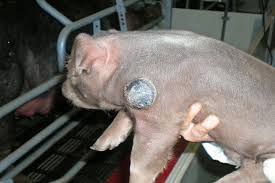


A well-designed and properly maintained chicken coop is essential for the health, safety, and productivity of your flock. Whether you’re a backyard hobbyist or a commercial poultry farmer, investing in a quality coop will provide your chickens with a comfortable and secure environment to thrive. In this comprehensive guide, we’ll explore the key considerations for designing and maintaining a chicken coop that meets the needs of your flock.
Read more related: Networking Events for Farmers
Designing Your Chicken Coop
When designing your chicken coop, consider the following factors to ensure it meets the needs of your flock:
Size and Space: Provide ample space for your chickens to move and roost comfortably. A general rule of thumb is to allow 2-3 square feet of space per chicken inside the coop, with additional space provided in the outdoor run area.
Ventilation: Proper ventilation is crucial for maintaining good air quality and regulating temperature and humidity levels inside the coop. Install windows, vents, or adjustable openings to allow for adequate airflow without exposing your chickens to drafts.
Lighting: Chickens require natural or artificial light to maintain their circadian rhythms and stimulate egg production. Install windows or provide artificial lighting to ensure your chickens receive 14-16 hours of light per day during the laying season.
Nesting Boxes: Provide comfortable and secluded nesting boxes for your hens to lay eggs. Each nesting box should be large enough to accommodate one or two hens and filled with clean bedding material such as straw or shavings.
Roosting Bars: Chickens prefer to roost off the ground at night to feel safe and secure. Install sturdy roosting bars or branches inside the coop at least 18 inches above the floor, with enough space for each chicken to perch comfortably.
Security: Protect your chickens from predators by installing sturdy fencing around the perimeter of the coop and run area. Use hardware cloth or welded wire mesh with small openings to prevent access by predators such as raccoons, foxes, and snakes.
Maintaining Your Chicken Coop
Regular maintenance is essential for keeping your chicken coop clean, safe, and functional. Follow these tips to ensure your coop remains in top condition:
Cleaning: Clean the coop regularly to remove droppings, soiled bedding, and debris. Use a shovel, rake, or brush to sweep out the coop and replace bedding material as needed. Deep clean the coop periodically with a mild detergent and disinfectant to prevent the buildup of bacteria and parasites.
Inspecting for Damage: Regularly inspect the coop for signs of wear and tear, damage, or structural issues. Check for loose or rotting wood, damaged roofing, and gaps or holes that could provide access for predators. Repair any issues promptly to maintain the integrity of the coop.
Managing Moisture: Monitor moisture levels inside the coop to prevent the buildup of mold, mildew, and ammonia gases. Provide adequate ventilation to promote airflow and reduce humidity levels. Use absorbent bedding material and add fresh bedding regularly to absorb moisture and keep the coop dry.
Pest Control: Implement pest control measures to prevent infestations by rodents, insects, and parasites. Keep feed and water containers clean and secure to minimize attractants for pests. Use traps, baits, or natural deterrents to control pests and protect your flock from harm.
Winterization: Prepare your coop for winter weather by insulating walls, sealing drafts, and adding supplemental heating if necessary. Provide extra bedding material to keep your chickens warm and dry during cold temperatures. Ensure water containers are kept from freezing by using heated waterers or replacing water frequently.
Regular Inspections: Schedule regular inspections of the coop and run area to identify any potential hazards or maintenance needs. Check for signs of pest activity, structural damage, or safety concerns and address them promptly to ensure the continued health and well-being of your flock.
Conclusion
A well-designed and properly maintained chicken coop is essential for providing your flock with a safe, comfortable, and productive environment. By following the guidelines outlined in this guide for coop design and maintenance, you can create a space that meets the needs of your chickens and ensures their health, safety, and happiness. With regular care and attention to detail, your coop will serve as a welcoming home for your flock for years to come.




One thought on “Chicken Coop Design and Maintenance: Creating a Safe and Comfortable Home for Your Flock”